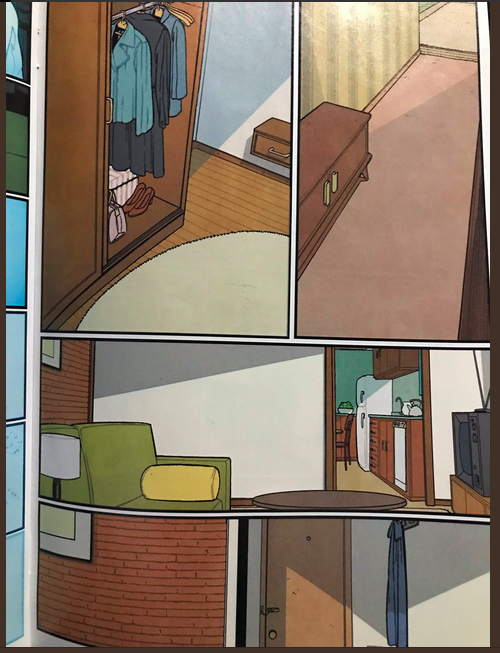From what I understand this is a page from a Jean Grey issue by Marvel…
I don’t know the context, I believe it precedes a romantic encounter between two main characters, but I’m not sure… Regardless, a page like this works in the movies, but not in comics. Let’s break down why.
In reality, pretty much anything you can think of, you can do in comics. When we say something doesn’t work in comics, were evaluating it’s effectiveness versus the narrative/dramatic impact versus the amount of real estate it takes to express.
In this instance, the writer is trying to express a quietness, stillness, loneliness? I really have no clue without seeing the context–which in itself is a first clue the technique doesn’t work.
You might have heard me say before (I think in the scene selection articles), when you work on a scene, it’s always good to imagine that scene extended to fill the entire issue. Or pretend the issue only contained similar types of scenes back-to-back. Ask yourself, “would the issue hold up? Would it be entertaining and engaging in that scenario?”
Clearly, a comic of only silent interior shots would not hold up. (Even less than a comic of all talking heads. Finally, something even worse than talking heads!)
Obviously not everything you write into a comic could sustain 22 pages, the point is, how far off is it? If it would be uncomfortable, or maybe a little drawn out, ok, it gets a pass for a page or so, but if the comic would come across totally broken, that’s a really big warning sign you’re working with a defective tool.
If we do some quick math. Wee math. 1 full page of silent furniture, out of a 22 page book, is approximately 5% if the book. (Broad strokes here people.)
In comparison a typical movie is 90 minutes. A scene of 5% in length being, about four and a half minutes long.
Good lord, could you imagine seeing a movie with a nearly 5 minute scene of humanless, actionless, cuts to static interior shots!?
Wait a second, I thought the title of the article says “Works in Movies, not in Comics.” Right.
In reality, I’m sure we’ve all watched a movie where the camera jumps around the rooms of an empty creepy mansion, or pans around the rooms of an empty apartment… Though I doubt there’s more than a handful of movies that ever pulled a 4.5 minute long scene of it…
Anyway, it works in the movies for 1 reason and 1 reason alone… the soundtrack.
Go back and watch those scenes again, and I guarantee you, the soundtrack shoulders the heavy lifting, either setting the tone and mood, or directly foreshadowing an important reveal in the next scene–cue the creepy violin music.
The bottom line is that the visual alone doesn’t work. Static interior shots are simply not engaging.
If you attempt to do something like the Jean Grey sample above, in your own story, the silent setup has to do exactly that, set up… and even more potently as there is no key, supporting soundtrack.
The silent static panels must speak narratively with such power and intensity, the contrast (comparison, or confirmation) when the next scene comes in, lands as an emotional KO punch.
Ultimately, the scene must express a specific and coherent story.
What’s the story in the panels above–again, I really don’t see it, if one actually exists. Maybe you could focus on a clock, show a petal falling from a dead flower. It really comes down to the context to give specific ideas, but if you’re going to use a silent static scene, now might be a great time to inject some serious symbolism.
However you tackle it, if you use a scene like this only to establish location or develop a mild sense of tone, mood, etc… (as I suspect Jean Grey does) you’ve 100% wasted valuable comic real estate and key narrative opportunity. ▪
About the Author —
Nick Macari is a full-time freelance story consultant, developmental editor and writer, working primarily in the independent gaming and comic markets. His first published comic appeared on shelves via Diamond in the late 90’s. Today you can find his comic work on comixology, amazon and in select stores around the U.S. Visit NickMacari.com for social media contacts and news on his latest releases.

